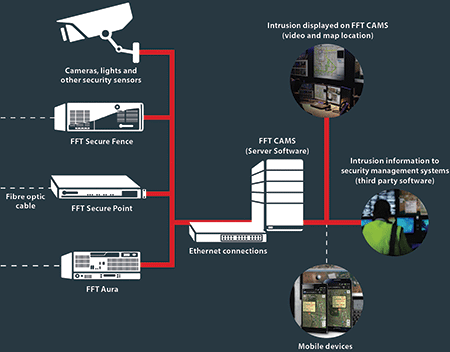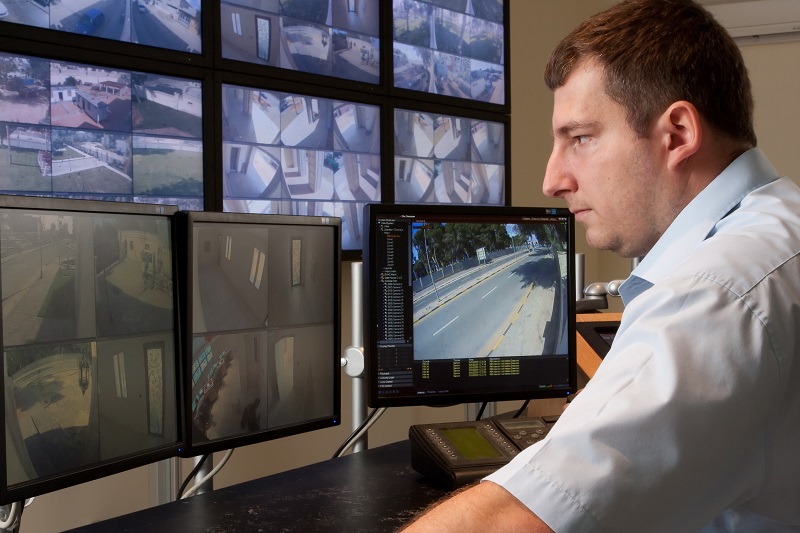Key Factors of Fiber Optics Infrastructure for Security Installations You Need to Understand
Key Factors of Fiber Optics Infrastructure for Security Installations You Need to Understand
Blog Article
Why Fiber Optic Safety And Security Solutions Are the Future of Security
The transition to fiber optic protection systems marks a significant improvement in the realm of security, driven by their extraordinary data transmission abilities and strength to outside disturbances. These systems not only assist in faster and much more trusted communication yet also provide a cost-effective option with lowered maintenance requirements. As the landscape of security develops along with emerging innovations such as AI and IoT, the possibility for optical fiber to improve and redefine security facilities comes to be significantly obvious. The ramifications of these developments elevate important concerns regarding the future of safety and security steps and their efficiency in an ever-changing atmosphere.
Advantages of Fiber Optic Systems
Among the key benefits of fiber optic systems is their remarkable bandwidth capacity, which facilitates the transmission of large quantities of information over fars away without significant loss. This particular is especially useful for safety applications that need the continuous monitoring and transfer of high-def video feeds, sensor information, and other vital information. Optical fiber can fit the growing needs of contemporary security systems, making certain that information remains undamaged and trustworthy.
Furthermore, fiber optic cables are much less susceptible to electro-magnetic interference, which can be a considerable problem in environments with numerous electronic tools. This resistance improves the honesty of the data being sent, consequently minimizing the threat of data violations or system failures. Fiber optic systems are naturally more safe than typical copper cables, as touching into a fiber optic line without detection is exceedingly difficult.
The sturdiness of fiber optic cords also adds to their charm. They are immune to environmental aspects such as dampness and temperature variations, decreasing upkeep prices and increasing system durability. On the whole, these benefits position fiber optic systems as a robust and effective option for modern safety frameworks, ensuring reputable and safe information transmission.
Boosted Data Transmission Speed

The capacity to send vast amounts of data rapidly assists in the smooth assimilation of high-def video clip feeds and advanced analytics. Security systems can now process and analyze information in real-time, improving reaction times and situational understanding. Furthermore, fiber optic connections support longer transmission distances without deterioration of signal high quality, making them optimal for extensive safety networks.
The boosted rate of fiber optic systems not only improves the effectiveness of safety and security operations but additionally lowers latency. This is specifically vital in essential scenarios where prompt decision-making can stop safety breaches or mitigate possible hazards. As companies remain to prioritize safety and efficiency, the need for rapid and reputable information transmission will definitely solidify fiber optic systems as a keystone of contemporary protection facilities.
Resistance to Disturbance
Fiber optic safety and security systems regularly show exceptional resistance to electro-magnetic interference, a vital advantage in atmospheres prone to digital noise. Unlike traditional copper wires, which can be negatively impacted by electro-magnetic areas, superhigh frequency disturbance, and other kinds of electrical disruption, fiber optic cable televisions make use of light to transfer information. This fundamental residential or commercial property ensures that the signals stay clear and unaltered, no matter bordering electronic task.
The use of glass or plastic fibers in fiber optic innovation creates an obstacle versus interference, permitting reputable information transmission even in difficult scenarios such as industrial centers, urban areas with high digital traffic, or places near radio towers. This particular considerably minimizes the likelihood of signal deterioration or loss, making fiber optic systems specifically suitable for safety applications where honesty and accuracy of data are vital.
In addition, this resistance to interference improves the general efficiency and integrity of security systems, guaranteeing that surveillance and sharp systems function perfectly. In a world where safety is significantly intimidated by sophisticated technologies, the durability of fiber optic systems sticks out as a crucial attribute, enhancing their status as an important component of contemporary safety and security facilities.
Cost-Effectiveness Gradually
Substantial price financial savings can be attained with time with the execution of fiber optic security systems. While the first financial investment might appear higher compared to conventional copper-based systems, the long-term economic advantages emerge with reduced operational and maintenance costs (fiber security). Fiber optic cords are naturally extra sturdy and much less vulnerable to environmental factors, which translates to decrease substitute and repair work expenses over their lifespan
Additionally, fiber optic systems require much less power to operate, which better lowers energy prices. Enhanced information transmission capabilities enable for less repeaters and amplifiers, lessening tools investment and simplifying installation processes. The scalability of these systems additionally adds to cost-effectiveness, as companies can increase their Source safety and security framework without incurring considerable added expenses.
One more aspect to take into consideration is the enhanced effectiveness in surveillance and response abilities that optical fiber provide. Enhanced real-time data transmission can cause quicker incident action times, possibly mitigating losses and responsibilities associated with safety and security violations. Altogether, the lasting advantages of fiber optic safety and security systems not only validate the first expense but also position them as an economically prudent option for companies looking for durable defense solutions.

Future Technologies in Security
Advancing modern technologies are set to reinvent protection systems, integrating expert system (AI) and equipment learning to enhance danger discovery and feedback capabilities. These developments will enable protection systems to assess vast amounts of data in real-time, determining patterns and abnormalities that suggest possible hazards. This aggressive strategy will certainly enable faster decision-making and more reliable case actions.
In addition, the incorporation of the Net of Things (IoT) is leading the way for interconnected protection devices, providing detailed monitoring and monitoring. Smart sensors can pass on information about environmental adjustments, while automated alerts can notify safety workers quickly of dubious activities.
Moreover, the advancement of biometric Check This Out innovations will better boost safety devices. Face acknowledgment, finger print scanning, and retina recognition are ending up click to investigate being more sophisticated, giving layers of authentication that are challenging to bypass.
Conclusion
Finally, fiber optic security systems stand for a substantial advancement in protection innovation, using unparalleled information transmission speed, resistance to electromagnetic interference, and long-term cost-effectiveness. As the demand for innovative safety and security solutions proceeds to grow, the integration of optical fiber with arising modern technologies such as AI, IoT, and biometrics will certainly even more improve safety and security frameworks (fiber security). The combination of these advancements will guarantee an extra safe and secure and responsive atmosphere, strengthening fiber optics as a keystone of future security systems
Report this page